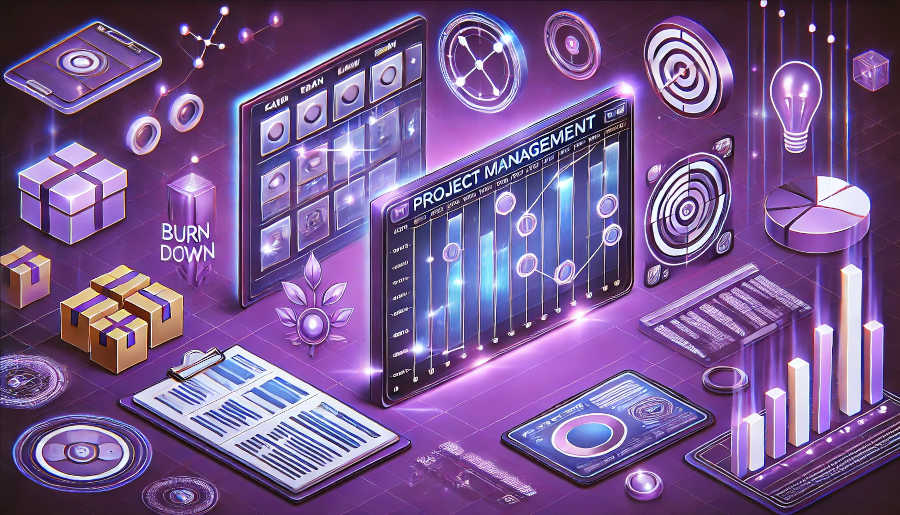Understanding the IPD Process
The IPD process is a collaborative approach that integrates people, systems, and practices into a unified framework. It encourages early involvement of all stakeholders, including architects, engineers, contractors, and clients, to align their objectives and expertise from the outset. This early integration ensures that potential issues are identified and resolved before they escalate, reducing rework and delays. By breaking down silos and promoting open communication, IPD fosters a culture of trust and accountability, which is essential for effective collaboration.
One of the core principles of IPD is the shared risk and reward model. Unlike traditional contracts that often pit stakeholders against each other, IPD aligns financial incentives with project outcomes. This creates a sense of collective ownership, motivating teams to work together toward common goals. For example, if a project is completed under budget, the savings are shared among the stakeholders, encouraging them to find innovative solutions and optimize resources. This collaborative mindset not only improves efficiency but also strengthens relationships among team members.
Another key aspect of the IPD process is the use of Building Information Modeling (BIM) and other digital tools to facilitate collaboration. BIM allows teams to create and share detailed 3D models of the project, enabling real-time coordination and conflict resolution. By visualizing the project in its entirety, teams can identify clashes and inefficiencies early in the design phase, reducing the likelihood of costly changes during construction. These tools, combined with regular team meetings and transparent communication channels, create a seamless workflow that enhances collaboration efficiency.
Strategies to Enhance Collaboration Efficiency
To maximize the benefits of the IPD process, teams must adopt strategies that promote collaboration and streamline workflows. One effective strategy is to establish clear roles and responsibilities from the beginning. By defining each team member’s contributions and expectations, IPD minimizes confusion and ensures that everyone is working toward the same objectives. Regular check-ins and progress reviews further reinforce accountability and keep the team aligned throughout the project lifecycle.
Another crucial strategy is to foster a culture of open communication and trust. In an IPD environment, teams are encouraged to share ideas, feedback, and concerns openly without fear of retribution. This transparency not only improves decision-making but also builds stronger relationships among team members. For instance, when a contractor raises a potential issue during a design review, the team can collaboratively develop a solution before it becomes a major problem. This proactive approach saves time and resources while enhancing overall project quality.
Leveraging technology is also essential for improving collaboration efficiency in the IPD process. Tools like cloud-based project management platforms and collaborative software enable teams to share information, track progress, and coordinate tasks in real time. These technologies eliminate the need for repetitive meetings and manual updates, allowing team members to focus on high-value activities. Additionally, data analytics and performance metrics can provide insights into team dynamics and workflows, helping identify areas for improvement and optimize collaboration.
Overcoming Challenges in IPD Implementation
While the IPD process offers numerous benefits, implementing it successfully can be challenging. One common obstacle is resistance to change, particularly in organizations accustomed to traditional project delivery methods. To overcome this, leaders must communicate the value of IPD and provide training to help team members adapt to the new approach. Demonstrating successful case studies and highlighting the long-term benefits, such as reduced costs and improved project outcomes, can also help gain buy-in from stakeholders.

Another challenge is ensuring effective communication among diverse teams with varying expertise and perspectives. Miscommunication or misunderstandings can lead to delays and conflicts, undermining the efficiency of the IPD process. To address this, teams should establish standardized communication protocols and use visual aids like BIM models to convey complex ideas. Regular team-building activities and workshops can also help bridge gaps and foster a sense of unity among team members.
Finally, maintaining alignment and focus throughout the project can be difficult, especially in long-term or large-scale projects. To mitigate this risk, teams should set clear milestones and performance indicators to track progress and ensure everyone remains on the same page. Periodic reviews and feedback sessions can help identify and address any deviations from the plan, keeping the project on track. By addressing these challenges proactively, teams can fully realize the potential of the IPD process to enhance collaboration efficiency.
Conclusion
The IPD process represents a paradigm shift in project delivery, emphasizing collaboration, transparency, and shared accountability. By integrating all stakeholders early in the project lifecycle and leveraging advanced tools and technologies, IPD enables teams to work more efficiently and deliver superior outcomes. However, successful implementation requires a commitment to open communication, clear roles, and continuous improvement. Organizations that embrace the IPD approach can overcome traditional barriers to collaboration and achieve greater efficiency, innovation, and success in their projects.
As the business landscape continues to evolve, the importance of effective team collaboration cannot be overstated. The IPD process provides a structured framework for fostering collaboration and aligning goals, making it an invaluable tool for modern project management. By adopting the strategies and best practices outlined in this article, teams can unlock the full potential of IPD and drive meaningful results for their organizations.
FAQ
1.What is the primary difference between IPD and traditional project delivery methods?
The primary difference lies in the level of collaboration and shared responsibility. IPD involves all stakeholders early in the project, aligning their goals and incentives, whereas traditional methods often operate in silos with separate contracts and conflicting interests.
2.How does IPD improve team collaboration efficiency?
IPD improves efficiency by fostering open communication, leveraging collaborative tools like BIM, and aligning financial incentives. This reduces conflicts, minimizes rework, and ensures that all team members work toward common objectives.
3.What are the biggest challenges in implementing IPD?
The biggest challenges include resistance to change, ensuring effective communication among diverse teams, and maintaining alignment throughout the project. Addressing these challenges requires strong leadership, clear protocols, and a commitment to collaboration.
ARTICLE TITLE :How to improve team collaboration efficiency through the IPD process ,AUTHOR :ITpmlib

















